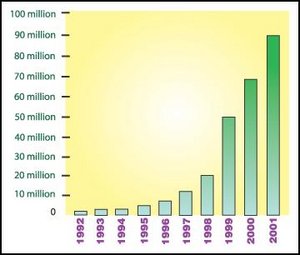Since the OAM's inception, the amount of funding into complementary and alternative medicine has risen significantly each year. In its first year, only $2 million for CAM research was appropriated. Even though this was a paltry sum compared to most any other federal funding, the alternative care community was ecstatic to have an office and funding. The funding has steadily grown, reaching approximately $50 million in 1999 and nearly $70 million in 2000.
The OAM's status rose in 1998 when it became the National Center for Complementary and Alternative Medicine (NCCAM). Under its new moniker, the NCCAM was given greater autonomy in deciding which research projects to pursue; the ability to offer grants; hire and fire staff; and determine which types of health care providers could serve on advisory panels.
With the passage of House Resolution 4577 in December, the NCCAM's budget was augmented to $89.2 million for fiscal year 2001 - an increase of over $20 million from 2000, more than twice the amount requested by the Clinton administration.
Also known as the Consolidated Appropriations Act, HR 4577 was introduced in the House last June by Representative John Porter (R-IL), a senior member of the Appropriations Committee. The bill incorporates the provisions of several other resolutions, including funding for medical savings account plans, treasury appropriations and venture capital programs.
For complementary and alternative care providers, the most important provision of the Consolidated Appropriations Act comes from House Resolution 5656, which pertains to appropriations for the Departments of Labor, Education, and Health and Human Services. In the original version of the bill, legislators asked for a modest budget increase of $9.8 million, which would bring the total to $78.8 million. However under text included from HR 5656 as part of the revised appropriations bill, the budget was increased to $89,211,000.
In an accompanying report, members of the House Appropriations Committee detailed the NCCAM's mission and urged the center to "give priority consideration to funding postgraduate fellowships that train physicians in integrative medicine; that support research on strategies for implementing the teaching of integrative medicine in education curricula; and that support efforts to design medical school curricula on integrative medicine."
While the money being used for complementary and alternative medicine research in the U.S. is still quite moderate compared to money spent on other conditions and treatments (the National Cancer Institute's 2001 budget, for instance, is more than $3.75 billion), this year's funding still represents a nearly 45-fold increase in federal spending for CAM research in less than a decade. It also shows that the nation's legislators and policymakers are finally beginning to grasp the power of complementary and alternative medicine and its influence on how health care is delivered in the U.S.
Dynamic Chiropractic editorial staff members research, investigate and write articles for the publication on an ongoing basis. To contact the Editorial Department or submit an article of your own for consideration, email
.





